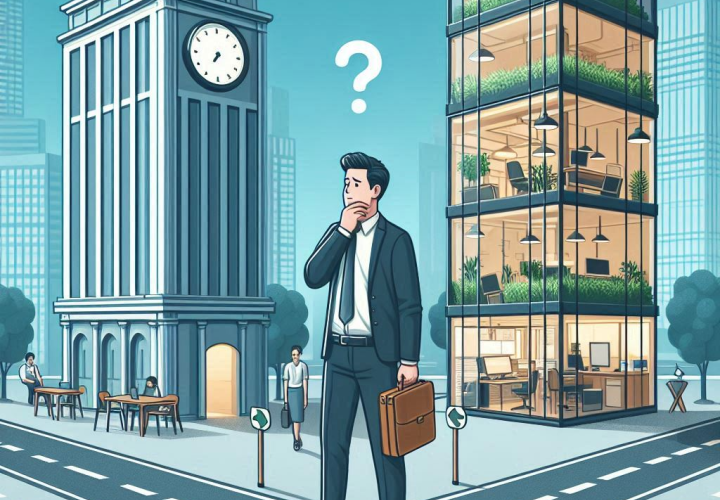Everyone reacts to change differently. For some, change is an immediate stress; others are more dominated by fear of change, while some immediately start looking for solutions. Some of us look for reasons for change before we start changing things. Some just shrug their shoulders and make the change. And some will not make any change at all. An Agile Mindset helps understand change, set yourself and the change with more calmness and mindfulness. That’s why Agile is so suitable in environments with frequent changes.
Unexpected Change
Fifteen years ago, when I was still working in a great team developing software for the Crisis Management of the Slovak Republic, one afternoon at 3:00 PM, my then director Peter called me to his office.
I was at a stage where I was transitioning from being a programmer to a team leader. Peter called me in to prepare for a presentation for the minister. It was the first time I was entrusted with such an important meeting and expected not to mess it up.
Although this was a surprise for me, there was another, bigger surprise. The presentation was scheduled for the next day at 9:00 AM in Bratislava. The challenge was not only preparing the presentation and demo of our product, but personally, the logistics were a much bigger challenge.
At that time, the highway from Prešov to Bratislava was still under construction, and the journey from Prešov to Bratislava typically took 6 hours. So to be in Bratislava by 9:00 AM, I had to leave Prešov no later than 3:00 AM. Since I lived an hour away from Prešov, this meant I had to leave home at 2:00 AM and wake up at the latest by 1:00 AM. On top of that, I still had to prepare the presentation, demo, data, laptop, and everything else. You can imagine.
Personally, I’m someone who doesn’t like sudden changes. For me, it would be ideal if things happened in a somewhat planned and reasonable way. That way, many problems could be avoided.
The problem, however, was the late notice about the departure. This meant staying at work later than usual, catching the night train, getting an hour of sleep, and figuring out how to get back to Prešov since the first train left at 2:30 AM. And I wouldn’t have made it by 3:00 AM.
Emotions kicked in. So much so that I had to go outside for some fresh air. An overreaction.
“Peter can’t be serious. How could he do this to me? Doesn’t he understand how stressful this is? Doesn’t he know how to reschedule the meeting?”
A frustrated young thirty-year-old sent an SMS to his wife. I admit I used some colorful language. Since I mentioned Peter in the SMS, something happened that shouldn’t have. I selected Peter, not my wife, as the recipient. And I didn’t realize it.
When I arrived at the office, I walked by Peter’s open door. Unaware that I had sent the SMS to him.
“Dušan, could you come in for a moment?”
“Sure, Peter. Is there a change?”
Instead of an answer, he handed me his phone with my SMS displayed on it.
I was mortified. Mortified.
And Peter’s reaction? A pat on the back and the words “It will be fine, you’ll handle it, you’ll figure it out!” And I did. All it took was to calm down. And it was quite the cooling off.
Why Change?
I realized why we were going and what it might impact. Not just on me, but on all of us in the company. I realized that I was projecting something onto Peter that he had nothing to do with. He was just the messenger.
Suddenly, solutions began to emerge. Several of them. Instead of problems, there were options and possibilities. Instead of blocks, there were solutions. And the realization of what really mattered. Understanding that the presentation would only take a short time and that the key message at the end of the demo was what mattered most. What we wanted the minister to take away from the meeting. The issues and information that the minister needed to address were important. The process was important. What, when, and how long. Alternatives in case the program failed (yes, programs often failed back then 😄).
It was simply about preparation. Even for the unpredictable. Because my approach determined the next steps for the other 40 colleagues and the quality of life for their families.
Change Forms
For me personally, it was a formative experience that comes to mind with every big challenge. Almost every year, similar challenges came, whether work-related or in personal life. And this experience helped me understand the Agile Mindset, its meaning, and its importance as a tool for adapting to change rather than fighting against it.
“What is the functional outcome supposed to be? For whom? How will they react to the change? With whom will we get through the change?”
A problem is only as big as how you approach it. Change is life. Species that don’t adapt become extinct.
Every step is just a controlled fall. It’s great when at each step you have someone who guides you, nudges you, and saves you from falling.
It’s great if, during times of change, you have a leader like Peter who didn’t let me stay in my comfort zone. On the contrary, he directed and prepared me for the next level, for which I am incredibly grateful.
The solution lies in the mental attitude towards change. Perhaps not the easiest one. The Agile Mindset has proven to be a way to absorb change, not only in IT teams but in every company and in personal life as well.
Because Agile works well for change. If you want it and know-how.
For starters, just start with the word want.
What is your story about change that could inspire the rest of us?

